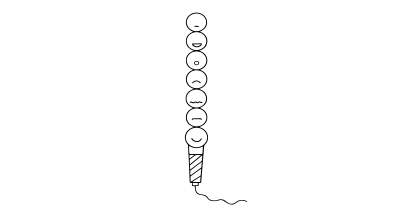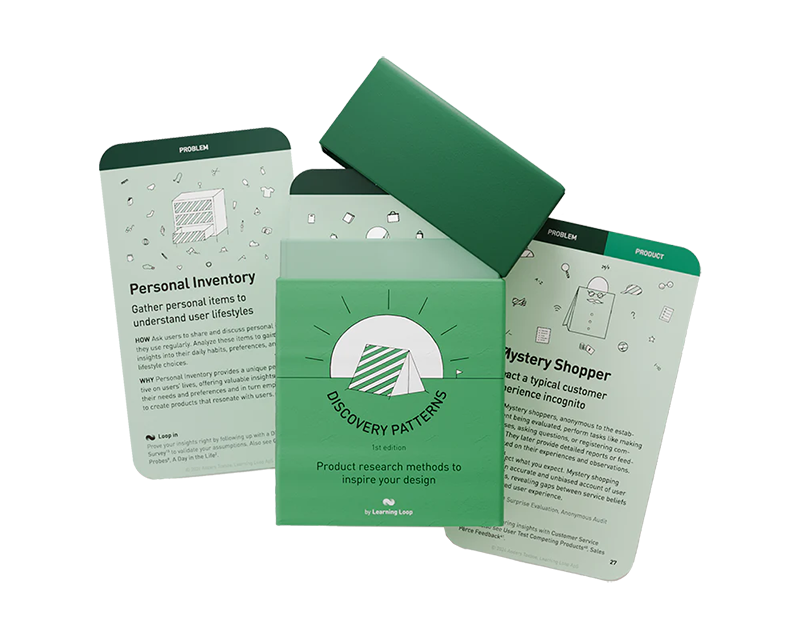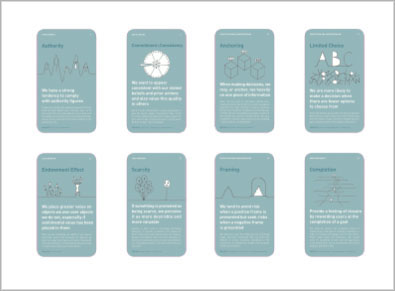Idea Validation: Problem
Customer Interview
Discover customer needs, wants, desires, pains, and gains

How: Select participants from a specific target audience. Concentrate on their past experiences instead of future expectations. Encourage descriptions of actual, context-rich situations to understand if they face the problem you've identified, their current solutions, and what would prompt a switch. Start with: 'Tell me about a time when you...'.
Why: Find out if customers face the problem you're solving, how they describe it, and if it's their top concern. This helps align your value proposition with customer segments.
Customer interviews are one of the most powerful tools in product discovery. They provide direct access to users’ lived experiences, revealing how they think, behave, and make decisions. But despite their simplicity, interviews are often misused—leading to false validation, missed opportunities, and wasted development cycles. Done well, however, they serve as a foundation for continuous discovery, helping product teams uncover opportunities that truly matter.
Excavate the needs, wants, goals, desires, pains, and gains of your potential customers to discover opportunities around what you are trying to achieve with your product (your desired product outcome).
Unlike expert interviews, which gather knowledge from domain specialists, or partner and supplier interviews, which surface operational constraints and delivery dynamics, customer interviews are uniquely focused on the people who use—or will use—your product. Their purpose is not to validate your ideas but to understand the real-world problems, needs, and contexts that shape user behavior. That requires asking better questions, listening without bias, and synthesizing insights with clarity.
Where expert interviews are about understanding systems, trends, or industries from a macro perspective and Partner and supplier interviews about uncovering dependencies and constraints in delivery ecosystems – Customer interviews, are about learning from the ground up. They start with the customer’s world—not your product—and stay grounded in what customers do, not what they say they want.
Continuous Product Discovery argues for making customer interviews are a core habit, practiced weekly by the product trio (product manager, designer, and engineer). The goal is not to chase feature ideas, but to continuously learn about the customer’s evolving world, uncovering opportunities and refining your understanding of what outcomes matter most. It’s about getting insights while we are making important product decisions – not after.
Common mistakes (and how to avoid them)
Many customer interviews fail not because of bad intentions, but because of flawed questions. People want to be nice. They want to support your enthusiasm. But this leads them to give praise, false encouragement, and hypothetical feedback that has little bearing on reality. Fitzpatrick’s central argument is simple: if your mom can lie to you to protect your feelings, so can your customers.
“If your mom can lie to you to protect your feelings, so can your customers.”
To avoid this, stop asking for opinions, preferences, or speculative future behavior. Don’t ask, “Would you use this feature?” or “Do you like this idea?” Instead, ask about the past. Ask for specific stories. Anchor in experience.
Good questions sound like:
- “Tell me about the last time this happened.”
- “What did you try first?”
- “How did you solve it?”
- “What was hardest about that?”
In other words, get people to talk about what they did – not what they think they might do. That’s where real insight lives. Ask for facts about specific situations, not opinions about what might happen.
Setting interviews up for success
Good interviews start with good preparation. Begin by deciding whether your goal is broad (to explore general workflows or contexts) or narrow (to go deep into a specific flow or feature). Choose participants who align with the context you’re investigating—not just your “best” customers, but representative ones.
Interview sessions typically involve three roles: an interviewer (usually the product manager or designer), a note-taker (who records direct quotes and behavioral signals), and optionally, an observer (engineer or stakeholder) who listens silently and contributes only during a dedicated debrief. This setup preserves focus and ensures everyone is aligned on what was heard.
You don’t need a rigid script, but a discussion guide helps. It should include:
- Open-ended, non-leading questions
- Prompts for storytelling
- Space to follow unexpected paths
Start each session with a warm-up, light personal questions to build trust, then move into richer territory. Ask about goals, problems, and workarounds. Don’t rush to show your product or pitch ideas.
Research questions are different than interview questions.
Running the interview
A well-run customer interview feels like a conversation, not an interrogation. Let the customer speak 80–90% of the time. Listen with curiosity, not with a pitch. Be okay with silence—it often brings out the most useful reflections.
In this way, for a 15 minute interview, you might just have one core research questions. The rest of the questions you’ll ask are follow-up questions for better understanding. For excavating the story. In this way, your questions are for listening.
Good interviews are not about asking good questions. They’re about hearing good answers.
This will make you present in the moment, get richer and beyond-the-surface answers results than if you were following a list of questions. In the latter case, researchers tends to be more focused on asking the next question rather than listening.
Avoid these common traps:
- Pitching your idea mid-interview
- Leading questions that suggest the “right” answer
- Over-validating a pain point without confirming it’s urgent or frequent
- Skipping past context in a rush to get to solutions
Instead, probe gently. Ask “What happened next?”, “Can you give me an example?”, “Tell me more about that.” Keep the focus on real behavior.
User memory is imperfect. People misremember or rationalize their actions. That’s why interviews should be used for exploring needs and motivations—not for predicting feature usage or making design decisions. Don’t ask people how they would use something. Ask them what they already do instead.
Turning conversations into insight
After each interview, the team should take 10–15 minutes to debrief. What surprised you? What assumptions were challenged? What themes are emerging across interviews?
Verbatim quotes are especially powerful. They help preserve nuance and signal how people frame problems in their own words. Over time, you’ll notice patterns—recurring jobs, pain points, workarounds, and unmet needs. These become raw material for opportunity mapping.
In Torres’ Opportunity Solution Tree, each interview helps clarify the opportunity space. You’re not jumping to features, you’re refining your understanding of what’s worth solving. You can then generate, prototype, and test solutions that map to those opportunities with far greater clarity and confidence.
When to use (and not use) Customer Interviews
Customer interviews are ideal when you want to:
- Understand user motivations, constraints, and goals
- Explore context and emotion behind workflows
- Learn how people behave in real settings
- Uncover problems and opportunities before you build
They are not effective for:
- Testing visual design or UI elements
- Estimating demand for new features
- Deciding between minor interaction choices
In those cases, use usability testing, A/B experiments, or behavior analytics. Customer interviews are for discovering why, not measuring how much.
The success of Customer Interviews can be measured by the insights they provide. Look for recurring pain points, feedback, and referrals to other potential interviewees. These measurements should be interpreted not just quantitatively but also qualitatively. The ultimate success is when the insights from these interviews lead to a product that truly meets the needs and desires of your customers.
Customer interviews aren’t about validation. They’re about exploration. They’re not about your idea. They’re about the customer’s world. When practiced regularly—by a cross-functional team, guided by curiosity, and grounded in real behavior—they transform how product decisions get made.
Interviewing well isn’t just a skill. It’s a mindset. One that values learning over confirming, listening over selling, and context over guesswork. Good interviews are not about asking good questions. They’re about hearing good answers.
Master that, and you’ll build products that matter.
Popular tools
The tools below will help you with the Customer Interview play.
-
Great Question
An all-in-one platform for recruiting, scheduling, interviewing, and analyzing customer conversations. Designed specifically for continuous discovery with built-in panel management and research repository.
-
User Interviews
A recruitment and scheduling platform that helps you find and manage participants for customer interviews. Integrates with research tools and supports incentive handling and participant tracking.
-
Dovetail
A research repository and analysis platform. Import interview recordings, tag insights, and collaborate on synthesis. Ideal for making interview data searchable and useful across teams.
-
Cycle
A UX research repository that supports interview analysis with tagging and highlight extraction. Good for organizing findings from continuous discovery work.
-
Otter.ai
Automatic transcription service often paired with Zoom or Google Meet. Helps quickly turn spoken customer insights into searchable text.
Real life Customer Interview examples
Airbnb
After their concept showed limited demand at the 2008 DNC, founders refined their service through host interviews, leading to a pivotal platform improvement. This user feedback-driven process was key to achieving a product-market fit, enabling global scalability.
A collection of clever product discovery methods that help you get to the bottom of customer needs and coining the right problem before building solutions. They are regularly used by product builders at companies like Google, Facebook, Dropbox, and Amazon.
Get your deck!Related plays
- Customer Interviews: The Foundation of Continuous Discovery by Teresa Torres at Product Talk
- The Mom Test: How to Talk to Customers and Learn If Your Business is a Good Idea When Everyone is Lying to You by Rob Fitzpatrick at Rob Fitzpatrick / FounderCentric
- Interviewing Users by Jakob Nielsen at Nielsen Norman Group
- Customer Interview Play by Atlassian Team at Atlassian

